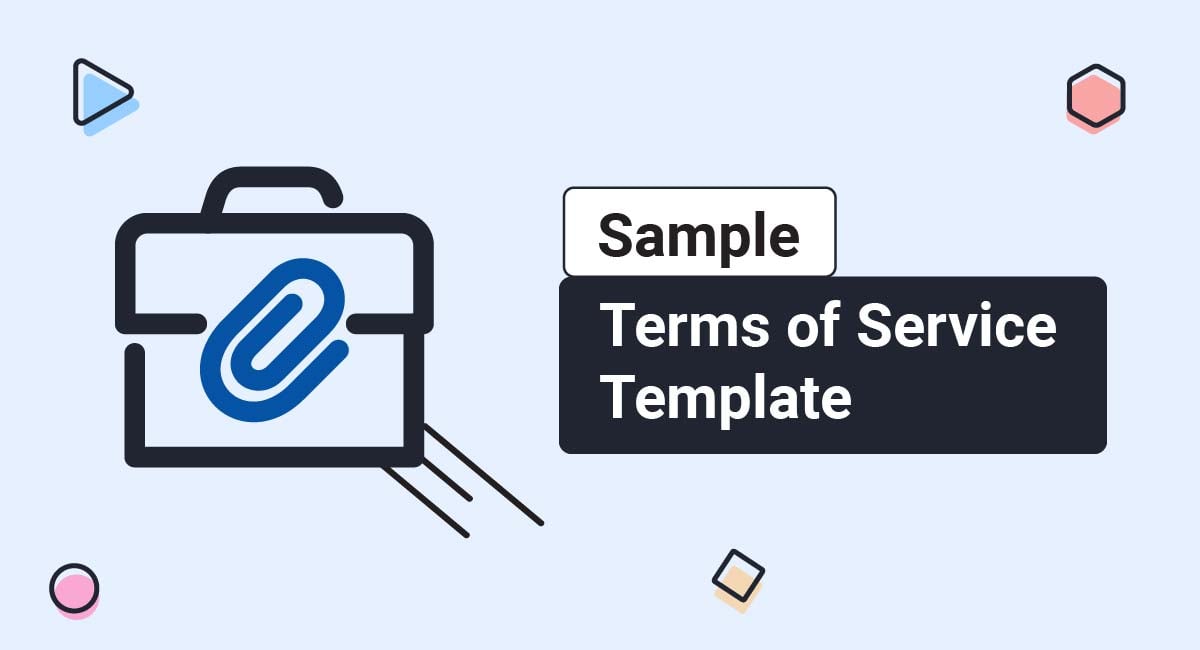

A Terms of Service agreement is a legal document that helps you set out the rules and guidelines that your users or visitors must agree to in order to use your website or app. It helps to limit your legal liability while maintaining control over your platform.
In this article, we're going to talk you through everything you need to know about Terms of Service agreements. We've also put together a Sample Terms of Service Template that you can use to help you write your own.
Our Terms and Conditions Generator makes it easy to create a Terms and Conditions agreement for your business. Just follow these steps:


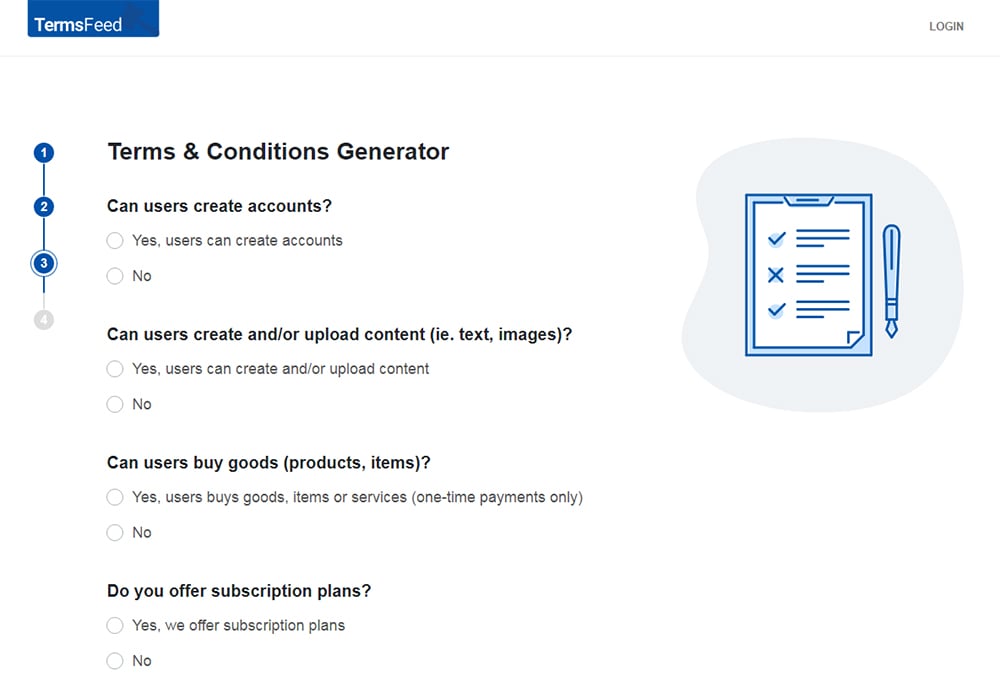
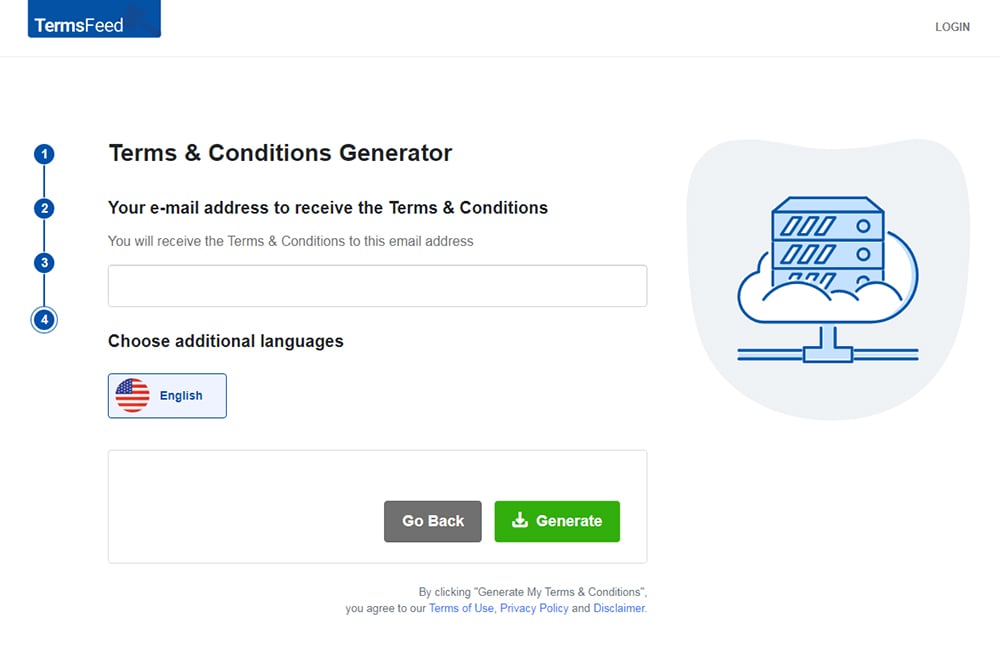 You'll be able to instantly access and download the Terms & Conditions agreement.
You'll be able to instantly access and download the Terms & Conditions agreement.As stated above, a Terms of Service agreement is a legal agreement where you disclose your rules and guidelines that your users or visitors must agree to in order to use your website or app.
Some common rules and guidelines include the following:
These agreements are commonly abbreviated as ToS and are also referred to as a Terms and Conditions, Terms of Use, Conditions of Use, or User Agreement. You may see it referred to as an End User Service Agreement (EUSA) but this isn't as common as the others.
Regardless of what you call your Terms of Service, the aim of the agreement is the same:
Depending on the nature of your business, your ToS may also need clauses that cover:
Here's an example of a fairly standard table of contents for a Terms and Conditions agreement, from NextRoll:
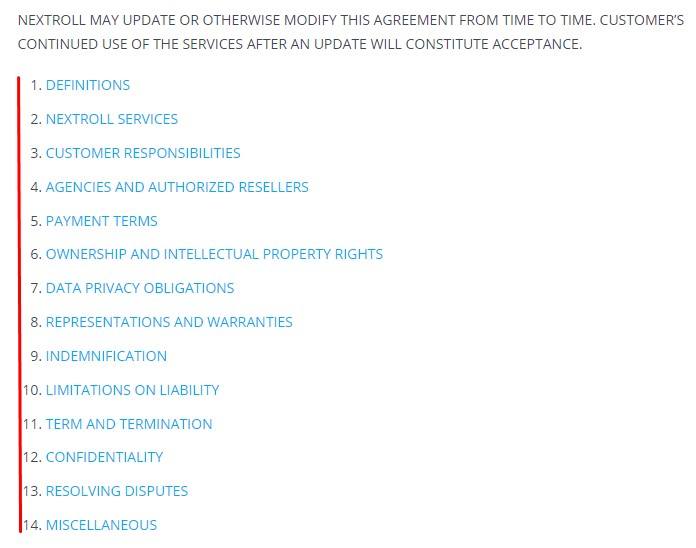
To get your users to agree to be bound to your legal agreements, use the clickwrap method to obtain consent. Clickwrap is when you have a user check a box or at minimum click a button that is clearly labeled as showing that the user is agreeing by taking that action.
Remember that legal agreements are only good if they can be enforced.
Here's a simple example of clickwrap in action. A user must click the checkbox next to a statement that says, "I accept and agree to the Terms of Use" before being able to continue interacting with the platform:
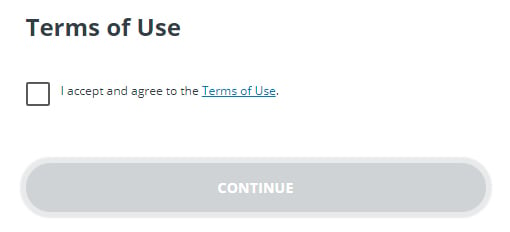
When a user clicks the box and then clicks the Continue button, the Terms of Use become enforceable against that user:
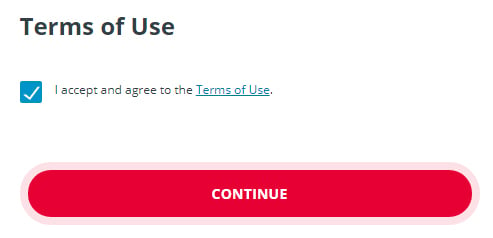
You should always include a link to your ToS wherever you ask users to agree to it, such as:
Keep a link to your ToS in your website footer as well so that your users can access your agreement at any time:

Not only will your users appreciate this accessibility, but it will help you prove that your agreement is enforceable if you ever need to do so in court.
Note that a Terms of Service is not required by law as a Privacy Policy is. The Privacy Policy is required by law in various countries around the world. However, it's a great agreement to have in place with your website or app in order to:
Here is a list of frequently asked questions that you may find useful.
You do not legally need to have a Terms of Service agreement.
However, having one is very important and comes with a number of benefits for both you and your users.
You'll benefit by being able to maintain more control over your website or mobile app. You can terminate accounts that don't follow your terms, control how legal disputes are handled and limit your liability.
Your users will benefit by knowing from the start what your rules are and what they must do or not do when using your platform. They can use your Terms of Service agreement to instantly find answers to common questions they may have.
Yes. All of these agreements serve the same purpose. They just have different names. The name you use is up to you.
These are the most common clauses that every Terms of Service agreement should include:
Here are some additional clauses that are more business-specific:
You should always display a link to your Terms of Service agreement in your website footer. People know to look here for important information, and it's a common best practice to place it here.
You should also display a link to your Terms of Service agreement anywhere where users should be reminded of your Terms.
For mobile apps, display your Terms of Service agreement within a menu in your app, such as an "About" or "Legal" menu.
Make your Terms of Service agreement enforceable by having your users click an unticked checkbox next to a statement that says something similar to "I have read and agree to the Terms of Service agreement."
You can also have users click a button that says something like "I Agree" next to a statement like the above if you don't want to use a checkbox.
This free Sample Terms of Service Template is available for download and includes these sections:
You can download the Sample Terms of Service Template as HTML code below. Copy it from the box field below (right-click > Select All and then Copy-paste) and then paste it on your website pages.
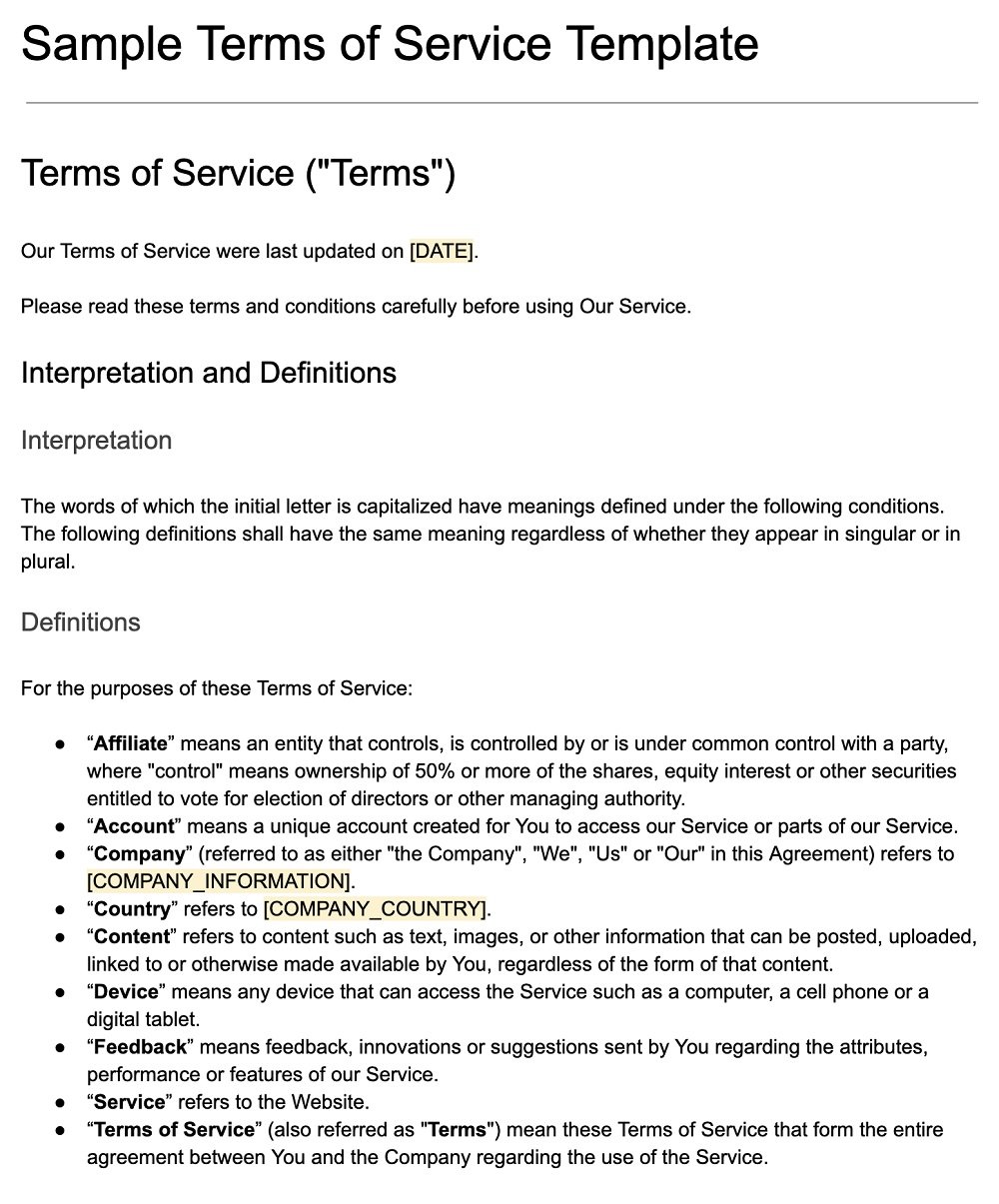
More specific T&Cs Templates are available on our blog:
| Sample Mobile App Terms and Conditions Template | A Terms and Conditions agreement for mobile apps. |
| Sample SaaS Terms and Conditions Template | A Terms and Conditions agreement for your SaaS business. |
| Small Business Terms & Conditions Template | A Terms and Conditions agreement for your small business. |
| Sample Ecommerce Terms & Conditions Template | A Terms and Conditions agreement for your ecommerce store. |
| Sample EULA Template | An End-User License Agreement for mobile apps. |
Comply with the law with our agreements, policies, and consent banners. Everything is included.
Disclaimer
This article is not a substitute for professional legal advice. This article does not create an attorney-client relationship, nor is it a solicitation to offer legal advice.
Last updated on
Appears in
Related articles
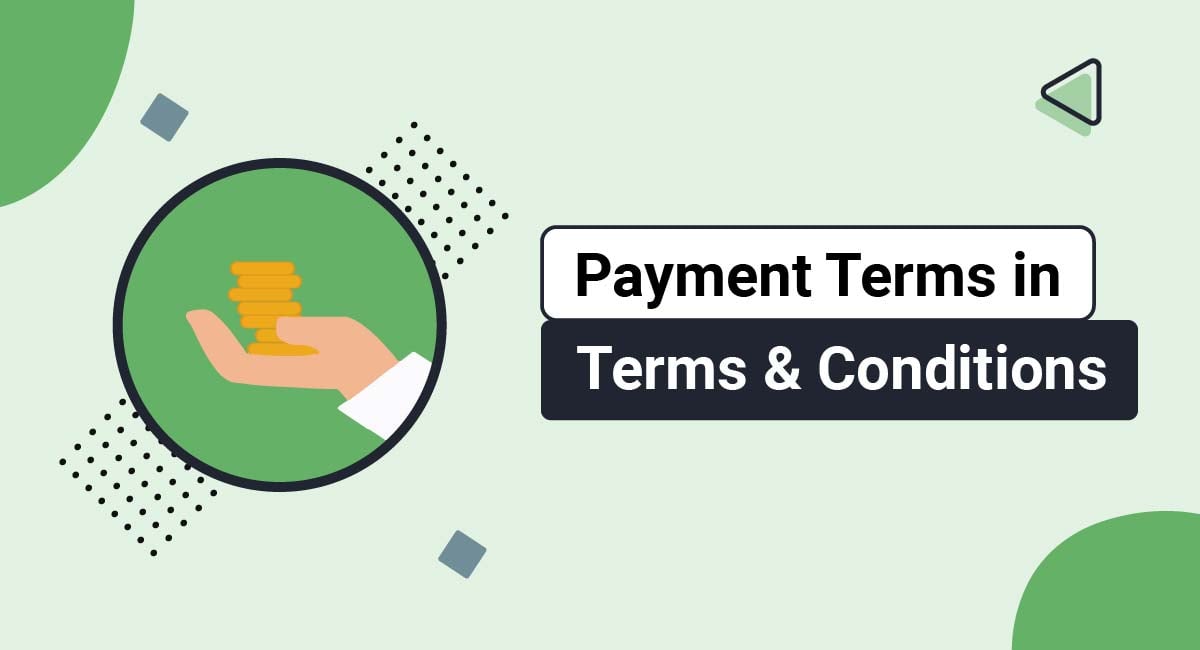
A payment terms clause in your Terms and Conditions agreement is where you disclose details such as how your business will process transactions electronically, what forms of payment you accept and what happens if the buyer cancels a transaction. Payment terms clauses can help mitigate the risk of non-payment, provide protection.
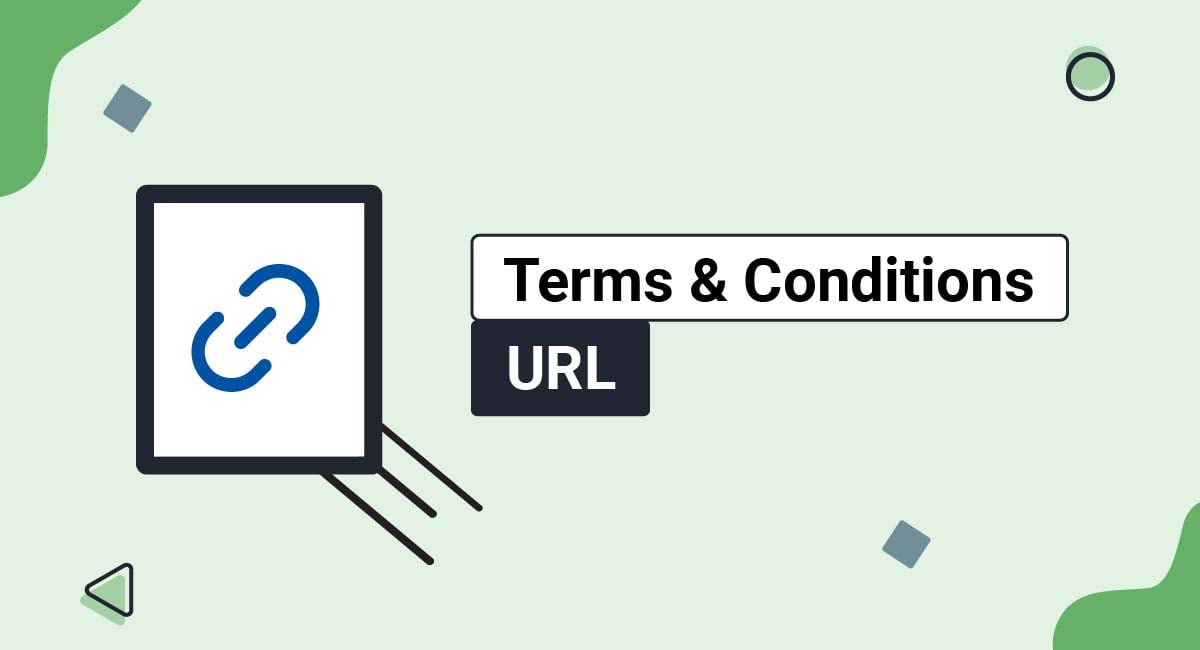
A Terms and Conditions URL is the web address where your Terms and Conditions agreement lives. You can use this URL to promote your Terms and Conditions agreement to the public on your website or through your mobile or desktop apps. This article will explain what a Terms and Conditions agreement.
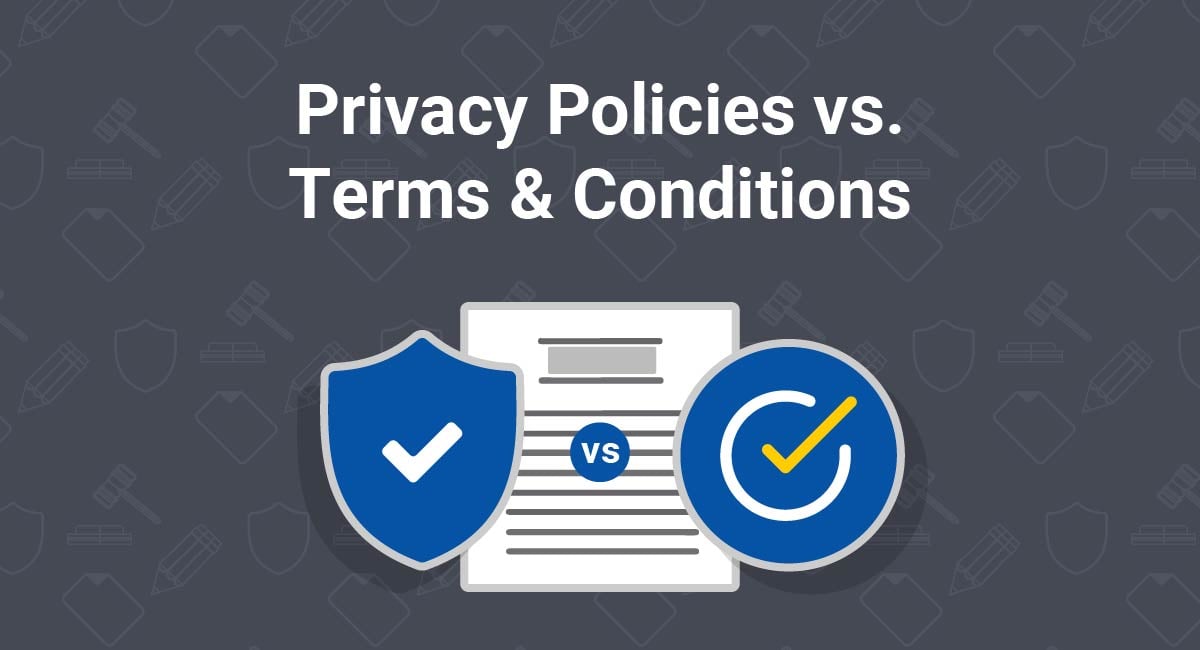
The main difference here is that a Privacy Policy is required by law if you collect or use any personal information from your users, e.g. email addresses, first and last names etc. while a Terms & Conditions agreement sets forth terms, conditions, requirements, and clauses relating to the use of.
Comply with the law with our agreements, policies, tools and cookie consent banners. Everything you need is included.
Disclaimer: Legal information is not legal advice, read the disclaimer. The information provided on this site is not legal advice, does not constitute a lawyer referral service, and no attorney-client or confidential relationship is or will be formed by use of the site.
Copyright © 2012 - 2024 TermsFeed ® . All rights reserved.